SmartDraw vs. SketchUp: In-Depth Comparison
Comparing SmartDraw and SketchUp reveals two very different approaches to design and floor planning.
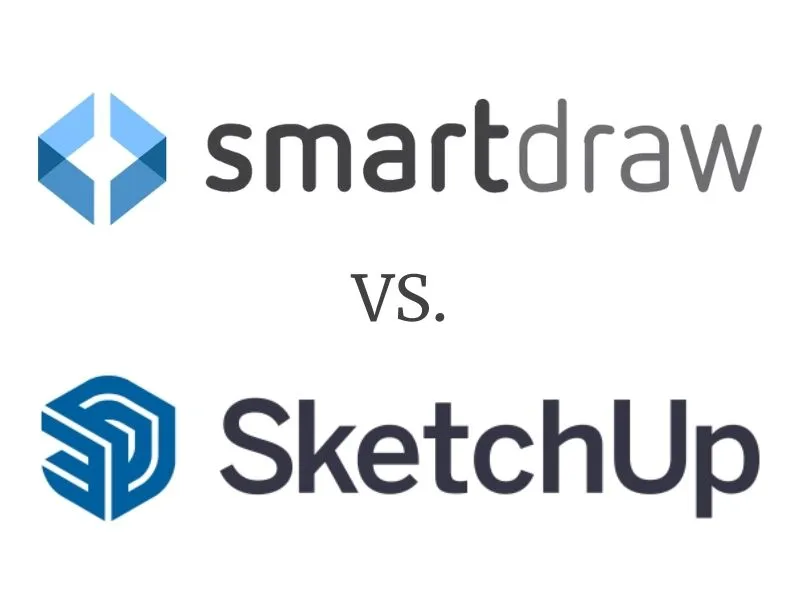
Comparison Summary:
SmartDraw works well for simple 2D floor plans, especially if you already use it for diagrams. SketchUp gives you more control over 3D modeling, but takes time to learn and often needs extra plugins. If you want a tool that’s easy to use, offers both 2D and 3D, and helps you create professional results without the hassle, RoomSketcher is a great alternative.
Are you looking for quick, simple 2D plans, or do you need immersive 3D visuals? Maybe you want an intuitive tool for beginners or one with advanced customization for professionals. There are many floor plan providers on the market, and knowing which to choose isn't straightforward.
In this post, we'll break down the strengths and drawbacks of SmartDraw and SketchUp so that you can find the best fit for your next project. We'll even introduce an alternative that might just combine the best of both worlds.
Software Overview
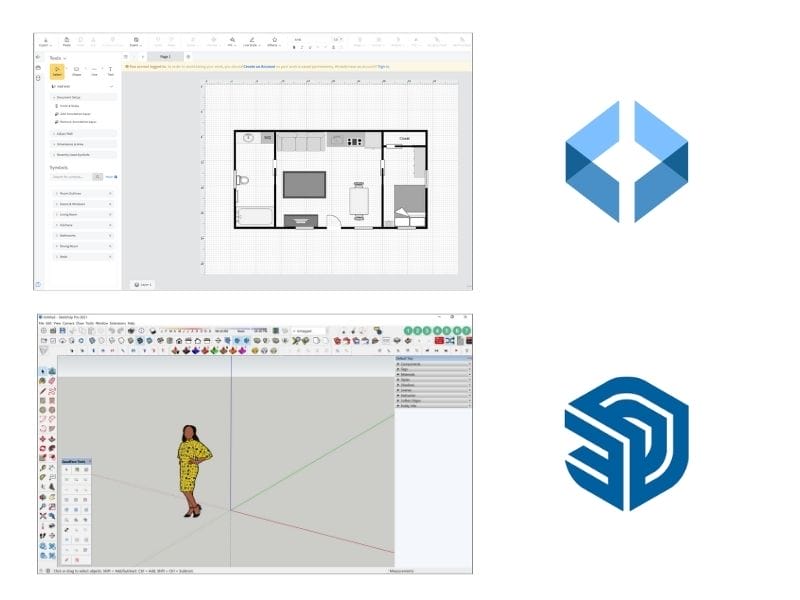
SmartDraw
SmartDraw mainly focuses on flowcharts and diagrams but also lets you create 2D floor plans.
If you already use SmartDraw for diagrams, the interface will feel familiar and easy to navigate.
However, new users might find it less straightforward when working on floor plans, as the design isn’t specifically tailored for that purpose.
SketchUp
In contrast, SketchUp is a general drawing and modeling tool. You can use it on both desktop and tablet, although the tablet version has fewer features.
To build floor plans in SketchUp, you must manually draw and piece together each wall and object.
This makes the process slower and more complicated than tools designed specifically for floor planning.
2D and 3D Floor Plans
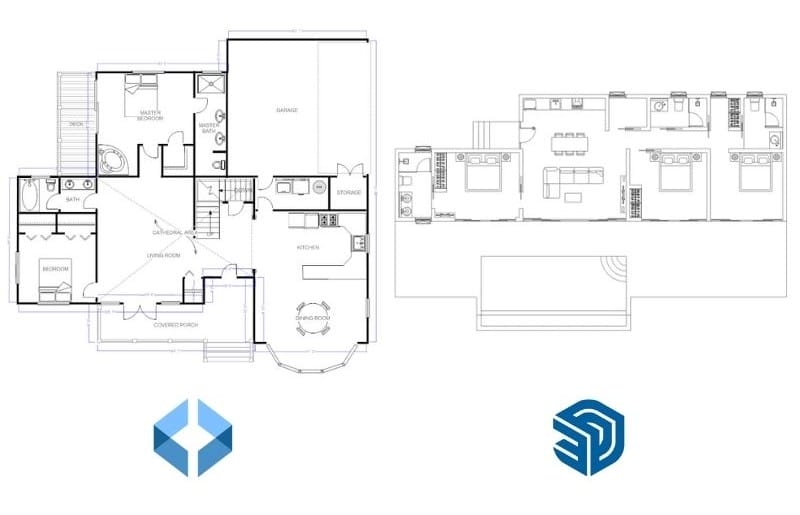
SmartDraw
SmartDraw focuses exclusively on 2D floor plans. It offers a library of 2D symbols and furniture, plus options to add annotations and symbols.
However, it doesn’t support 3D floor plans or any kind of 3D visualization, which limits its usefulness if you want immersive or realistic presentations.
SketchUp
SketchUp supports creating 3D models from 2D floor plans or images, but this process is manual.
Typically, you import a 2D plan or image into SketchUp, scale it to the correct size, and then trace over the lines to draw walls and other elements. After tracing, you use tools like Push/Pull to extrude the 2D shapes into 3D forms.
Customization and Visual Quality
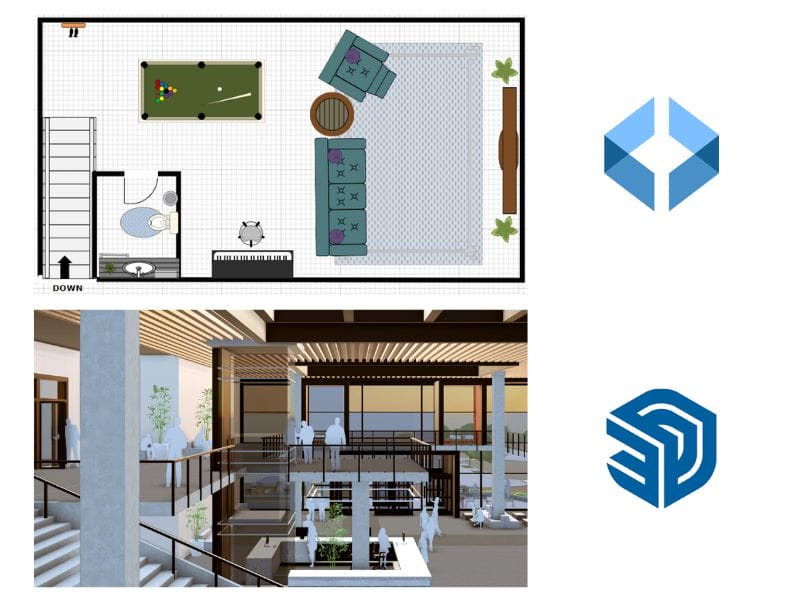
SmartDraw
SmartDraw lets you customize your floor plans to some extent. You can add your company logo and disclaimer text to a letterhead, and adjust colors and textures of 2D symbols.
Still, the process isn’t very intuitive, and the materials library is limited. The final visuals are basic and functional but unsuitable for marketing or high-end presentations.
SketchUp
SketchUp offers some basic customization options, such as changing floor colors, adding text and logos, and adjusting the 3D view’s angle.
However, most furniture stays white by default, and the 3D visuals look quite simple unless you invest in third-party plugins. Improving the look can take extra time and money.
Workflow and Efficiency
SmartDraw
SmartDraw works well for simple 2D floor plans, especially if you’re already familiar with its diagramming tools. But it isn’t built for complex architectural projects and can feel awkward when handling more advanced designs.
SketchUp
SketchUp requires a much more manual approach. You have to manage separate 2D and 3D versions, and adding or customizing furniture involves many clicks.
This makes it less efficient for straightforward floor plans, and the time needed grows as your project gets more complex.
Customer Support
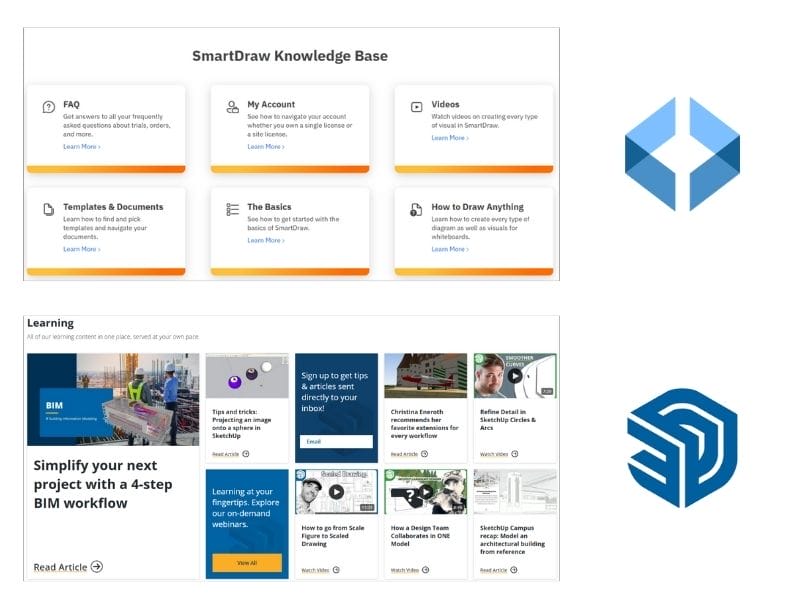
Both SmartDraw and SketchUp offer customer support, but they differ in style.
SmartDraw
SmartDraw provides a help center with articles and videos, and their customer service is responsive. However, most support content focuses on flowcharts, which might not be helpful for floor plan users.
SketchUp
SketchUp offers community forums and official support channels. While you can use a free basic version, unlocking advanced features and plugins often increases your costs.
Choosing Between SmartDraw and SketchUp
SmartDraw suits users who need simple 2D floor plans and have already used the software for other diagramming tasks. It’s not the best choice for advanced 3D features or highly customized visuals.
SketchUp is suitable for users who want general 3D modeling and are willing to spend time learning the software and possibly buying add-ons. However, it might not be the right fit if you want a quick, streamlined floor plan tool or rich visuals without extra effort.
Want the Best of Both Worlds? Try RoomSketcher
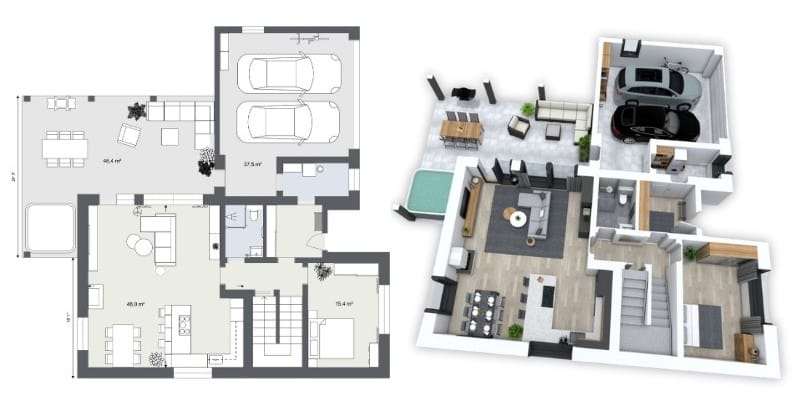
RoomSketcher is purpose-built for floor plans and home design, making it much easier to use than general drawing tools like SmartDraw or SketchUp. Its drag-and-drop interface and automatic 3D visualization from your 2D floor plan make the process fast and intuitive for beginners and experts alike.
Smooth experience across devices
RoomSketcher can be used on computers and tablets, online or offline. You can start from scratch, use templates, import blueprints, or order professional redraws. Edit your projects anywhere, anytime, without missing a beat.
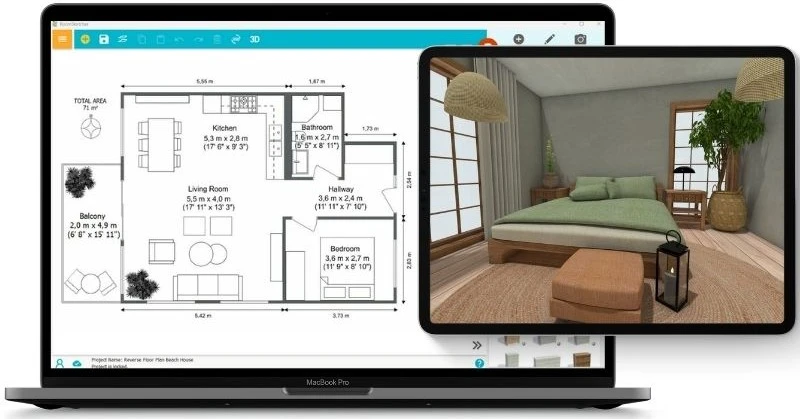
Productive workflow
Draw your floor plan once in 2D and instantly get both 2D and 3D versions. Any changes are updated automatically in both formats, saving you time and eliminating duplicate work.
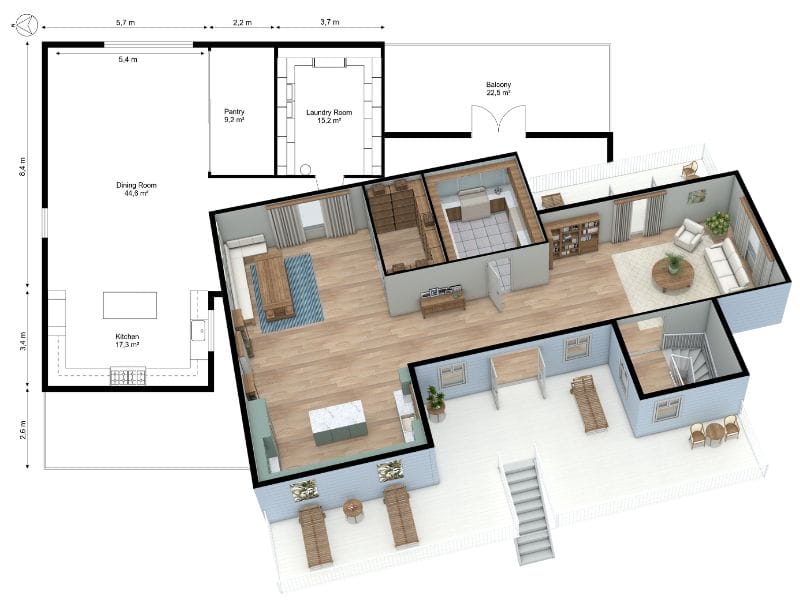
Powerful customization and visualization
RoomSketcher offers an extensive library of customizable furniture, fixtures, and materials. Easily personalize your plans with colors, textures, and branding. The software delivers high-quality 3D Photos, 360 Views, and interactive walkthroughs for realistic presentations, without needing extra plugins.
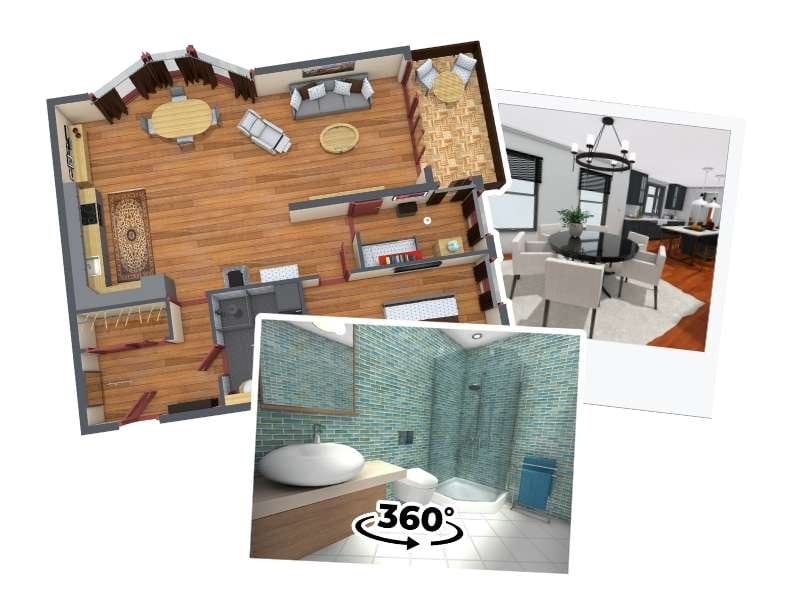
Fast professional results
Need floor plans quickly? Use the redraw service to get professional 2D and 3D plans from your sketches or blueprints by the next business day. Make last-minute edits and regenerate plans at no extra cost.
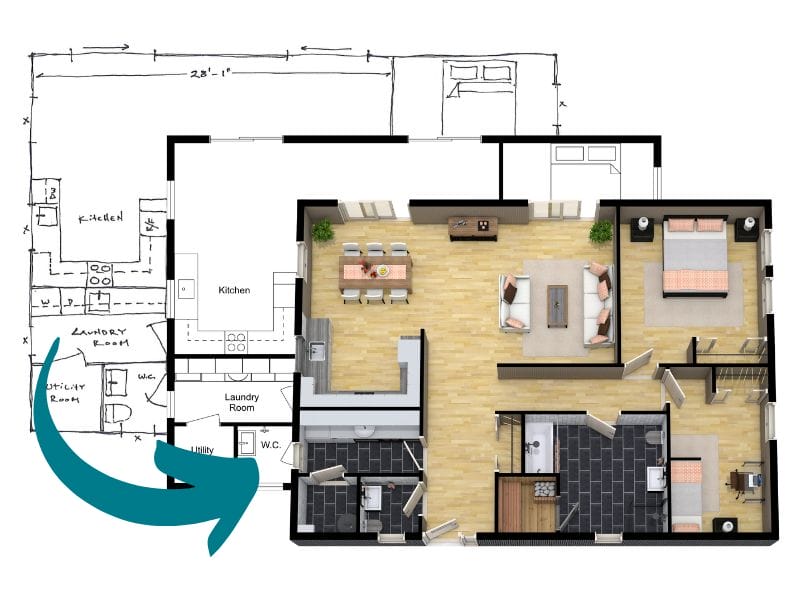
Affordable and supported
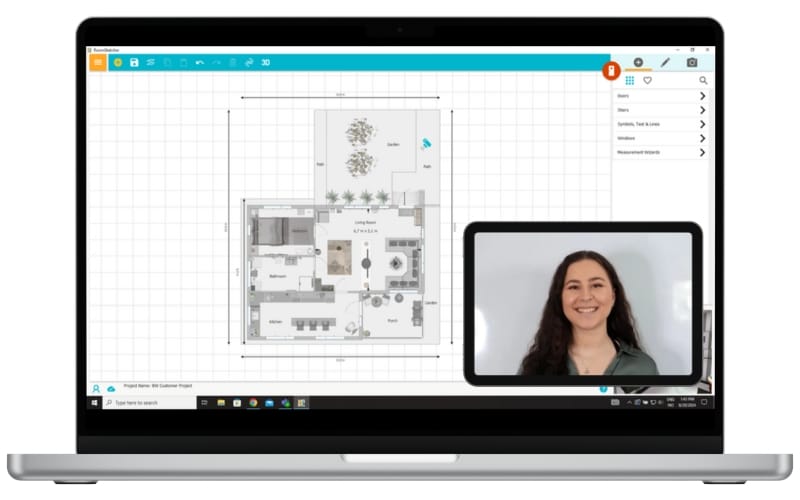
RoomSketcher offers flexible subscription plans and friendly customer support, plus a helpful Help Center and easy-to-follow tutorials.
They also run live weekly webinars to help you get started, with an opportunity to ask questions and get real answers right away.
If you’re using RoomSketcher for your business, they even offer one-on-one training to make sure you’re getting the most out of the software.
Designed for Professional Floor Plans
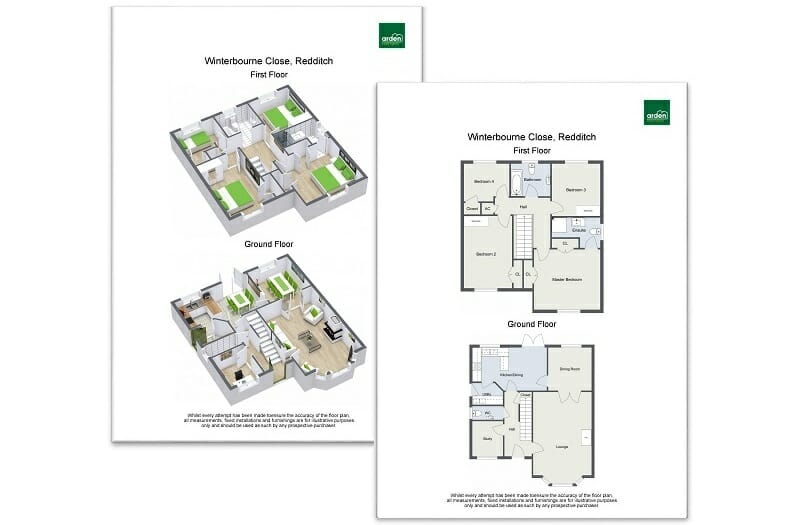
RoomSketcher combines user-friendly design, robust features, and professional results in one affordable package.
It’s the clear choice for anyone who wants to create, customize, and share floor plans quickly and efficiently, without the steep learning curve or extra costs of other tools.
We Help Customers Succeed Every Day
"RoomSketcher has elevated my business to another level. It's easy to learn and navigate. Their tutorials are fantastic as well as their customer service."
Gwen McClure
Interior Designer
"No doubt, business and good reviews will flourish with the help of RoomSketcher, which I highly recommend. Both technology and excellent customer service!"
Ruben O. Feldman
Architect
"RoomSketcher has completely changed the way I work. I can now do all the work I normally had to outsource on my own."
André Martinsen
Real Estate Photographer
Want to Learn More? Check Out These Articles
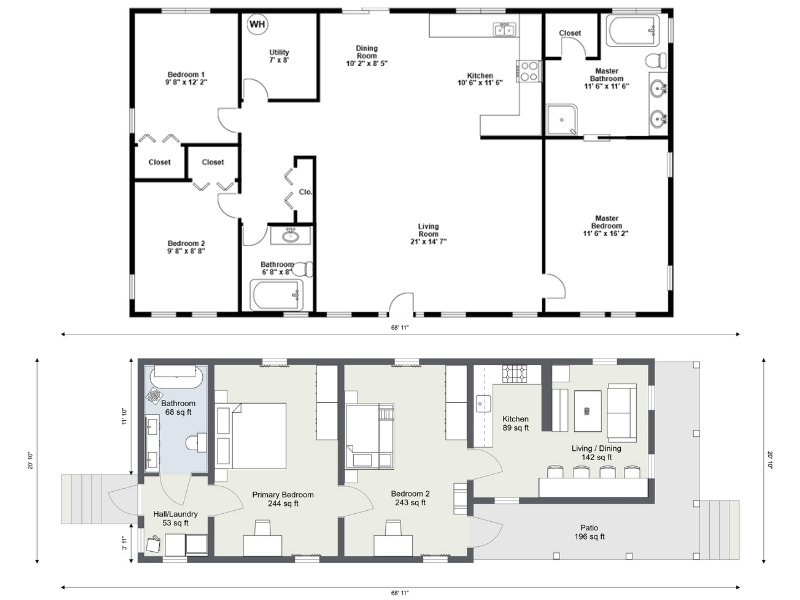
SmartDraw vs. RoomSketcher: Which Floor Plan Software Is Better?
Choosing between SmartDraw and RoomSketcher for your floor plan needs? This article will help you decide.
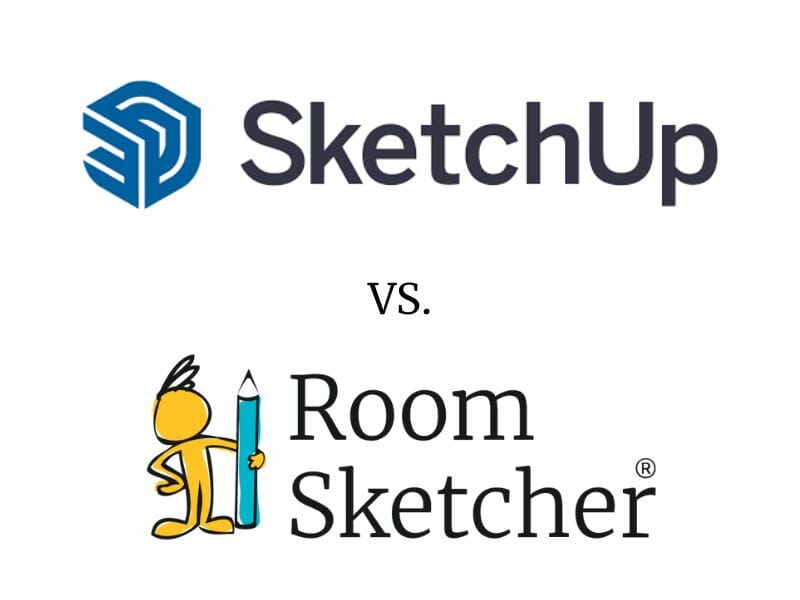
SketchUp vs. RoomSketcher
Choosing between SketchUp and RoomSketcher for your floor plan needs? This article will help you decide which one is best for you.
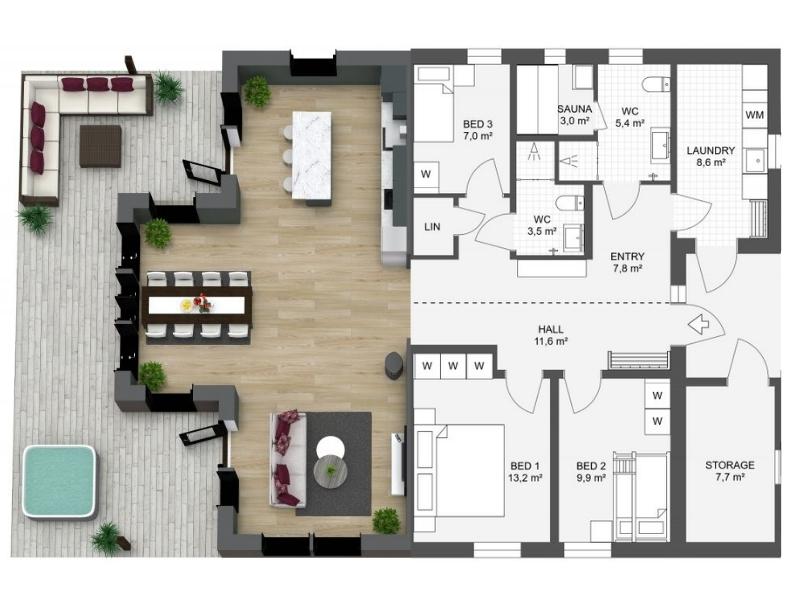
The 8 Best Floor Plan Software Tools
The market is flooded with floor plan software options, each promising to make your processes easier and more efficient. We've put the top tools to the test!
